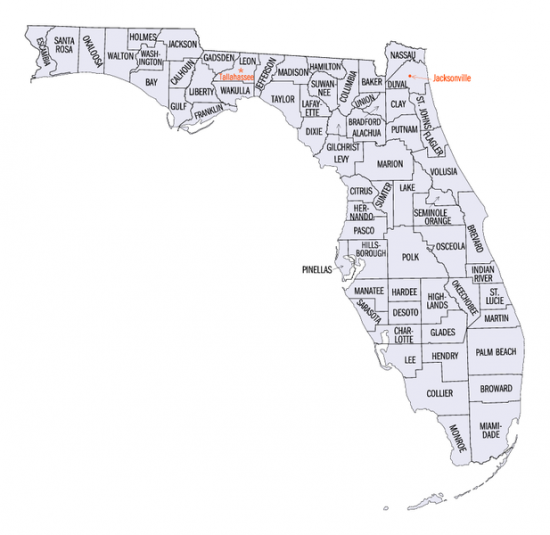We’ve waited the entire year to say, Election Day is here and I think I can get unanimous consent that we’re all immensely glad. And as voters anxiously await America’s choice, there are a few clues as to who might have the edge in the closely contested state of Florida.
Let’s start with demographics. 6.4 million votes have been already cast. That is estimated to be 2/3 of the expected vote and the increase in early votes have been off the charts in every demographic group. While whites accounted for 27.2% of the increase, African-American turnout was up 9.2%, Latinos were up 48% and “other” catapulted by 48%. It is that third figure that should make Republicans very nervous and both parties were reportedly stunned by the numbers. Daniel A. Smith of the University of Florida said that Hispanics, normally a low-turnout demographic, are “over-performing their share of the electorate.” Additionally, the early vote share of the white vote was 65.8%, compared with 15% Hispanic and 13% African-American. That is a decrease of the white vote from a little more than a percent four years ago but 5% from 2008, which, for reasons i don’t need to explain, would not bode well for Team Trump.
Further, 91,000 more registered Democrats cast votes during the early voting period than Republicans. That is down from 120,000 in 2012, but there are a few reasons. One is that it is projected that 50,000 more Republicans who voted on Election Day four years ago opted to cast an early ballot this year which means that more Republican votes have been “cannibalized” than Democrats. More ominously for the GOP, an estimated 50,000 more voters accounted for the decrease in the Democratic numbers because well, they’re no longer Democrats. Often referred to as “Demosaurs” (folks who had long stopped voting for the party at the national level), these voters finally got around to changing their registration because they wanted to vote in the GOP primary. Additionally, no party affiliation has risen as well, particularly among new registrants. Many think this group is more likely than not to skew Democratic, at least at the Presidential level.
There was one poll that showed Clinton was getting the votes of 28% of Republicans. While that figure sraised eyebrows even among the most gleeful of Democratic partisans, it was not forcefully disputed by some political analysts. But say they’re not voting for Clinton. A bigger question is how many are either leaving their choice for President blank or voting for someone other than Donald Trump. After all, Jeb Bush, who had hoped to be on the ballot himself this year, is supporting Libertarian Gary Johnson.
Finally, let’s look at how voting appears to be going by region. In Miami-Dade, Smith wrote that of 1.5 million residents,” 707,844 county residents had already voted: 44 percent were Democrats, 30 percent Republican, and 25 percent had “no party affiliation, a group that tends to skew younger and Hispanic, and thus toward Clinton.” The early voting records in Broward, Orange (Orlando) and Osceola have been shattered from 2012. Energized Democrats in DuVal (Jacksonville) actually prevailed in the early vote, another reversal from four years ago, though few give Democrats a shot at winning a county that gave George W. Bush 61%. And in Hillsborough (Tampa) a county Democratic political operative Steve Schale uses as a “recent benchmark” because it is “the only county won by Bush twice and Obama twice,” Democrats took a 7% advantage.
To be sure, there are a few GOP counties, such as Lee (Fort Myers, Cape Coral) and Collier Counties on the West coast where early voting from four years ago has been exceeded as well. But while those areas are from small, they are not nearly as populous as some of the others above (Schale also notes that turnout in Democratic Palm Beach is down about a percentage point from where it should be and Pinellas (St. Petersburg) is about even). And, I make the earlier point that more Republicans seem to be abandoning Trump than Democrats Mrs. Clinton, data backed up by Schale who wrote yesterday that “Sarasota, Polk, and Duval, show no signs of being anywhere near their GOP highs.” The panhandle is another area many Rs believe may fall slightly under GOP expectations.
The bottom line. Florida has been a genuine toss-up for two decades. Prior to last week, there was little that indicated that this would change. But trends are unmistakable and, unless there is a total reversal of expectations regarding who votes out, Schale notes “the math is not there for Donald Trump in the Sunshine State.” With the ghost of 2000 haunting many, that is less than a sure thing. But unmistakably, Mrs. Clinton has the edge and if it comes true, it will give her a hefty 29 electoral votes on the way to 270.
Graphic: By United States Census Bureau ([1]) [Public domain], via Wikimedia Commons

















